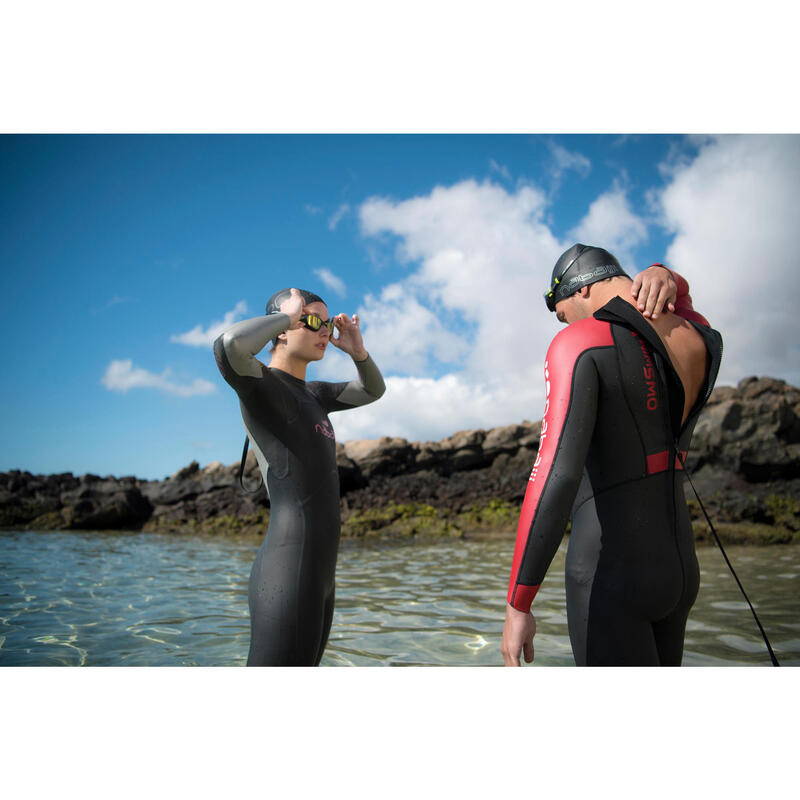Usage advice:
To avoid neck irritation and rubbing, use Vaseline or a mixture of 50% Vaseline and 50% lanolin.
Threading advice:
The Glide-Skin component used on this suit is highly flexible and elastic, but also more fragile. During donning, do not use fingernails or extreme stretching. Put on arms and legs gradually.
Component:
Arms: neoprene GLIDE SKIN 2 mm
Torso, back and legs: neoprene GLIDE SKIN 2.5 mm
FLATLOCK seams: non-waterproof
ECO CONCEPTION
RECYCLED POLYESTER
The interior fabric is knitted with polyester yarn made from recycled plastic bottles.
1 combination = 45 plastic bottles
DOPE DYED:
The yarn is dyed directly, not the fabric. This is achieved by introducing insoluble pigments into the polyester or polyamide. This technique saves up to 60% water and considerably reduces Co2 emissions.
Why is a neoprene wetsuit difficult to put on?
Putting on a neoprene wetsuit can seem a daunting task, especially for those who have never used one before. Neoprene wetsuits need to be tightened to prevent water penetration during practice. If the wetsuit is wide, the swimmer will feel colder and will also be more exposed to skin irritation as the wetsuit moves during the session.
*check out our wetsuit fitting tips!!
I feel my muscles work differently when I use a neoprene wetsuit. Is this normal?
If you're in your first open-water sessions with a wetsuit, it's normal to feel a different muscular workout because the sleeve offers more buoyancy to the arms and so we have to add "extra" force to plunge the arm into the water. This sensation will disappear after a few sessions.











